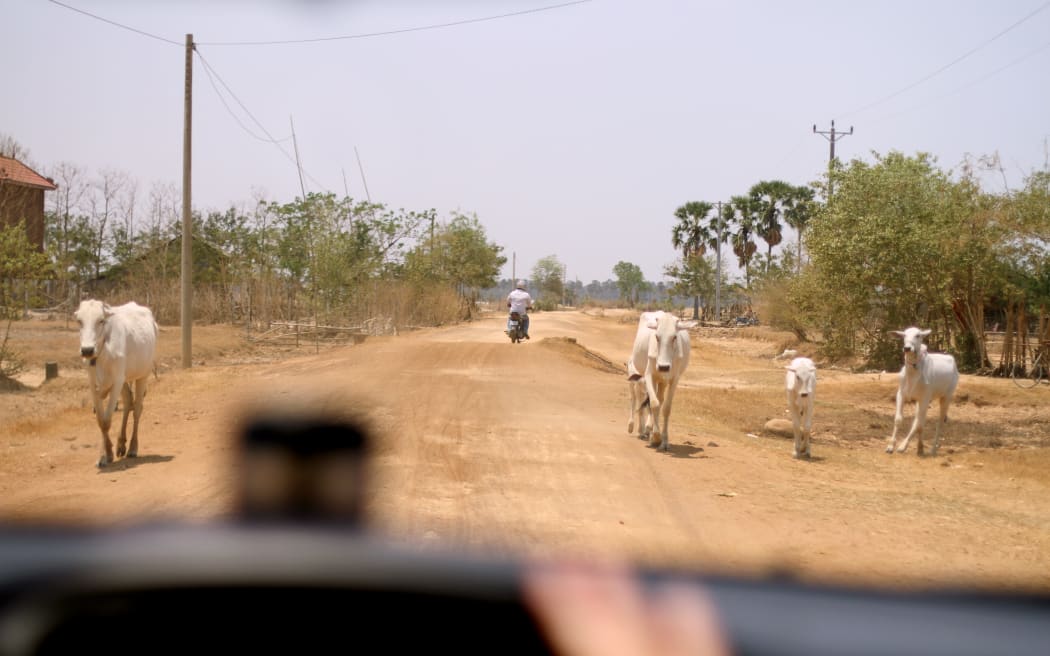New Zealand is importing millions of kilograms of fish that men die to catch, but Customs won't reveal who's selling it. These are the stories of the men who catch that fish: the lost years of their lives, the violence they survived, and the bleak future awaiting them if they escape.
***
On the edge of a village in central Cambodia, Sek Sophal drives a 4WD over jolting potholes, red dust billowing up to the pale sky.
He does these rounds every few months, visiting villages to make brief speeches about the dangers that await to the north-west: human trafficking on fishing boats over the Thai border.
The villages have changed from what he remembers. The roads used to ring lush rice paddies bordered by open, rushing irrigation channels. Now the channels are cracked and dry, the paddies replaced with sunburned ochre clay. Beyond the car window, nothing moves but the occasional curl of dust or a lost-looking water buffalo wallowing in the slick red mud of a roadside ditch.
“Before, even in the dry season there used to be water here, but now,” he says, gesturing out at the cracked beds – “Nothing. And when the rainy season comes, there is not enough rain.”
He pulls up at a village. It’s small enough to not feature on any map. A collection of houses, thatched with palm fronds; a single dirt road and a shop selling cooking oil, cordial and sachets of shampoo.
So many of the young men who catch the world's fish come from villages like this. Tiny non-places in the backblocks of Cambodia offering little by way of jobs, opportunity or development. Legions of them cross the borders to Thailand each year in the hopes of a good wage - with estimates ranging from 600,000 to 1 million Cambodian workers migrating annually. Many eventually form the enormous labour force crewing Thai ships, which demands around 55,000 migrant recruits every year.
Once on board, their futures ride on the whims of a captain. Often without legal documentation and already owing debts for the border crossing, many spend years working in brutal conditions without pay. And the fish they catch? It travels all around the world, stocking cans of cat food, tuna and frozen shrimp on supermarket shelves - including household brands in New Zealand.
Sophal steps out of the car and into the dust. He greets Thin Theng Ly, who knows the boats well.
***
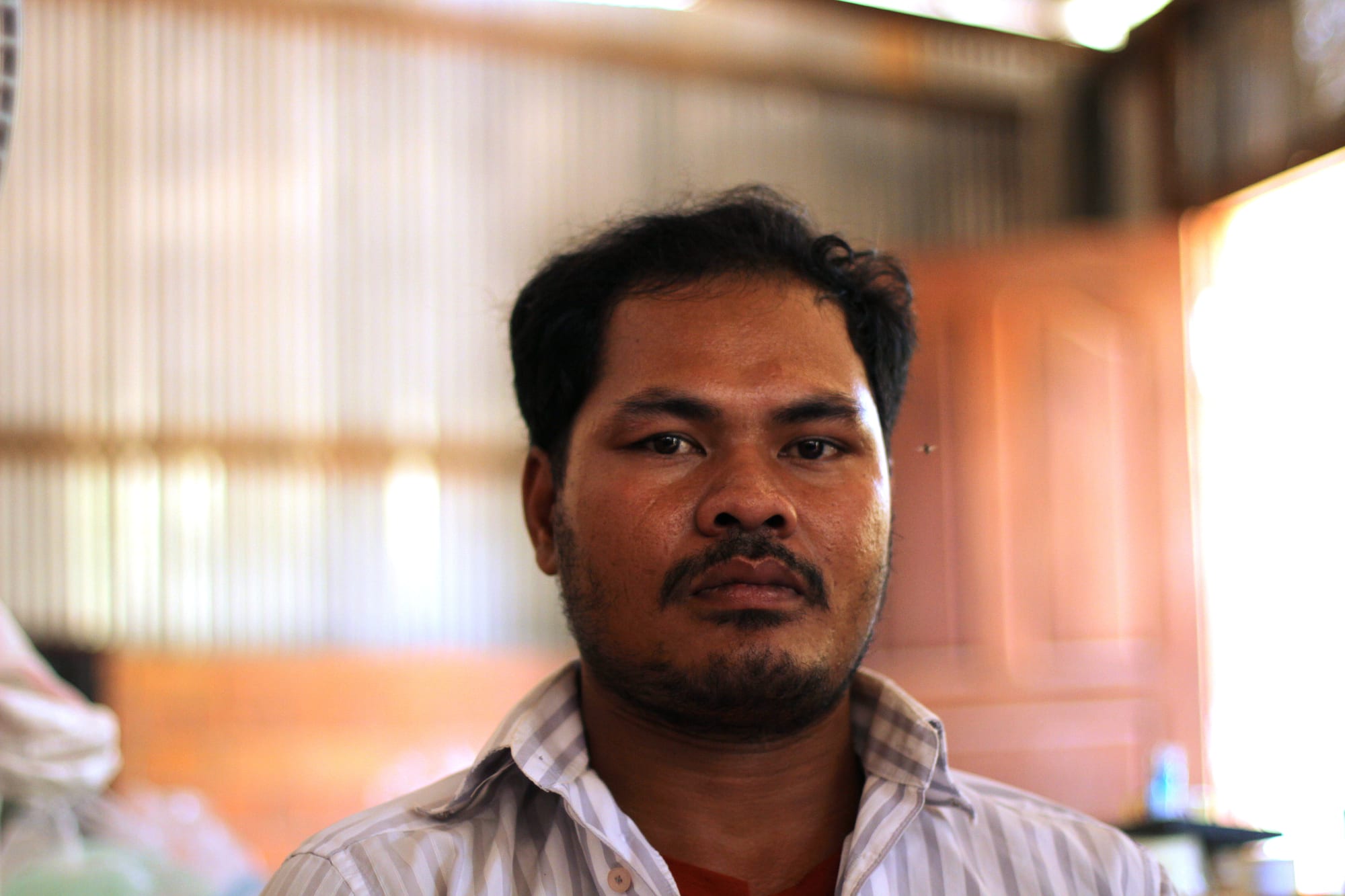
“I didn’t know that I was sold until I worked on the boat for a long time. I didn’t know what they had done to me." Thin Theng Ly spent six years enslaved on a fishing boat. Photo: RNZ / Tess McClure
Thin Theng Ly left this tiny village in debt. He was 22, and spent the next six years of his life on the boat, returning a little before his 29th birthday.
Today his house doubles as a store-front with foil-packaged sweets and pens for sale. A small tribe of chicks peck grain in the corner, squeaking so loud they have to be herded out into the sunshine before our interview can begin. Old women from the village gather and peer into the house, blocking the light from the windows as he begins to talk.
Ly had struggled to find work, and used up his parents’ savings. But he used to hear rumours about the jobs over the border in Thailand, and listened to the stories of other locals who went there, got rich, and improved their lives. He wanted the same. He wasn’t alone - around 40 percent of men migrating from Cambodia to Thailand have household debts driving them over the border.
Most of the men make use of ‘masterminds’ - guides or traffickers who assist with creating documents, cover the costs of a taxi, and promise a good job at the other end. Ly was guided by a man named Voeun, who told him he would be working on a boat and would be paid six thousand baht (NZ$240) per month: more than double what a rural labourer in Cambodia could earn on a strong wage.
“As I went, I was sold,” Ly says. “I didn’t know that I was sold until I worked on the boat for a long time. I didn’t know what they had done to me. I only knew that I was taken to work on the boat.
“There were many crossing the border at that time,” he says. “I knew some of them and we have never seen each other [again] so far.
He has a broad, open face and speaks softly, looks down at the floor of the shop often. His voice cracks only once, when he talks about seeing the captain beating two men on his ship to death.
The men were Burmese, a minority on a ship staffed by a Thai crew and Khmer workers. Ly and his fellow Khmer men would band together to resist beatings and protect each other. Others were not so lucky.
“I felt so frightened,” he says. “Khmer men often were not mistreated because we helped each other so the captain dared not to so mistreat Khmer men - while the Burmese men did not know how to help along.”
The ships have their own laws and hierarchies. They are floating, self contained kingdoms, ruled by violence. They come ashore only rarely, and often in foreign countries where the men have no connections, no way of speaking the language, no money to make a call home.
A report by the United Nations Inter-Agency Project on Human Trafficking found 58 percent of the Cambodian fishermen trafficked aboard Thai fishing boats had witnessed a fellow fishermen killed by boat captains when they were too weak or sick to work. The men reported seeing men thrown overboard, shot or decapitated. An Associated Press survey of 400 fishermen found 12 percent had seen a person beaten to death.
In August 2014, shaky footage shot on a mobile phone made its way to shore and showed five men being executed - shot from the deck as they floated in the water next to the boat. One of the boats in the water nearby was identified as a Thai fishing ship. No-one was ever convicted for the murders.
International Organisation for Migration [IOM] is the agency in charge of repatriating many men to their country of origin if they escape the ships.
Cambodia programme manager Brett Dickinson says violence on board is simply the norm.
“Some men don’t have that bad an experience - the boats and the captains and the crew treated them OK,” he says. “But then we have this other extreme. Where they’re being tortured, they’re seeing other people be murdered, constantly beaten or forced to fight other people, injected with drugs, forced to take amphetamines to work harder…” he pauses for a second. “Various more extreme scenarios.”
At sea, men can easily disappear. On a ship in the middle of nowhere, often the only Thai are the captain and a couple of crew. With 15 to 30 men of different nationalities doing the work, mutiny is a constant threat. There are quotas to meet, money to make.
“You have to control that group with an iron fist,” Dickinson says
As local fisheries have been depleted, the Thai fleet has adapted and become an increasingly global force. IOM now finds trafficked Cambodian men all around the world - picking them up from the coasts of Papua New Guinea, Mauritius, Africa, off the coast of India, Fiji, East Timor.
“They’ve just swum for it,” Dickinson says. “Men found just floating in the sea in North Sumatra, found on isolated islands.
“It’s just the opportunity they have to escape.”
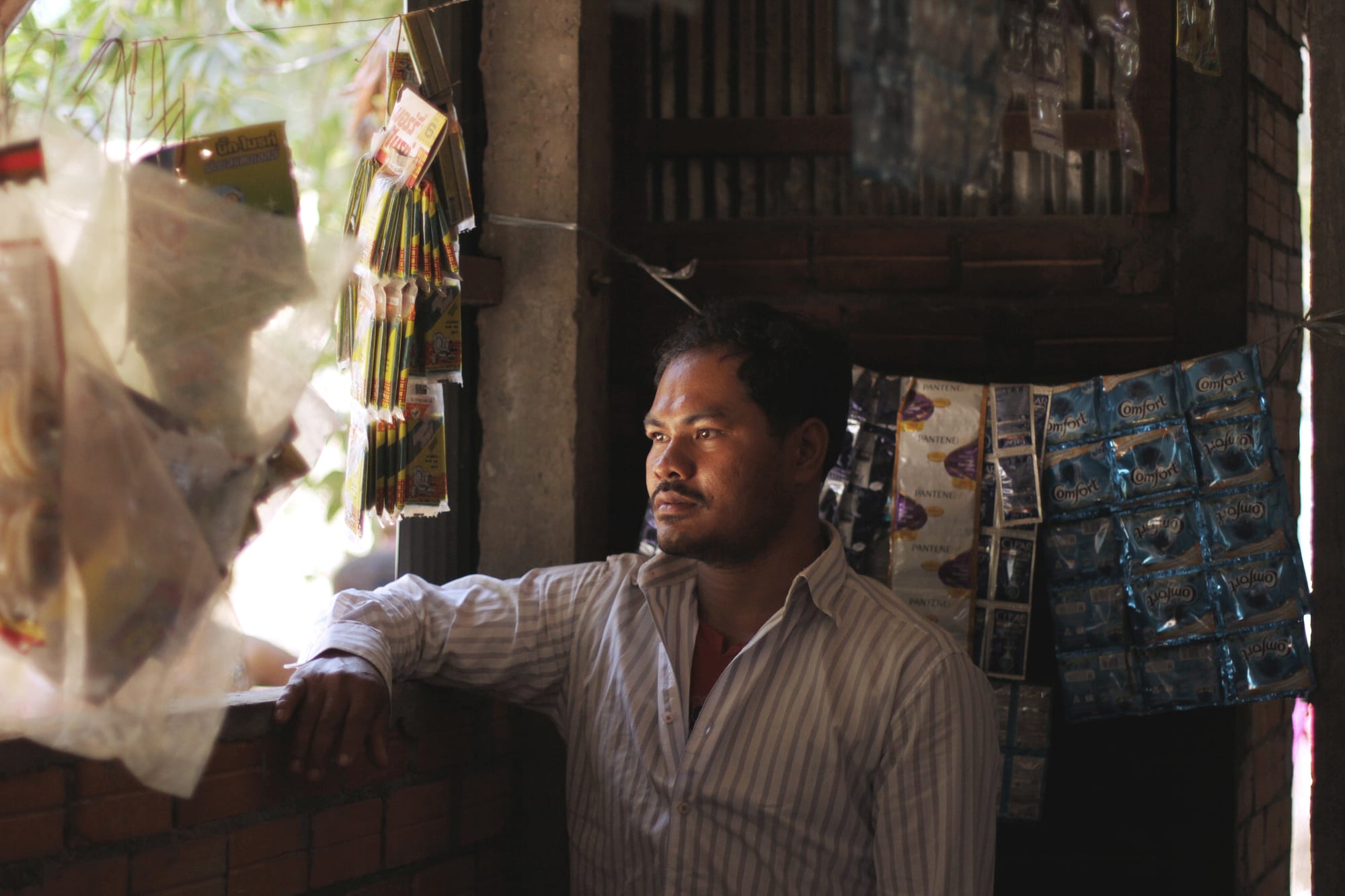
Thin Theng Ly saw two Burmese men beaten to death on his boat. One survey found 58 percent of trafficked Cambodian fishermen had seen a fellow worker killed. Photo: RNZ / Tess McClure
***
Life on the boats is hard, Ly says. “It’s hard to eat and sleep and work without a break time. I fully worked for 24 hours from day to day. When I had a break, I could only sleep for an hour or an hour and half at the most. When we were not working, they had beaten, scolded and mistreated us.”
Many of the men who return from the boats talk about working inhuman hours - between 20 and 23 hours a day, for weeks on end. Some use drugs to stay awake and alert through the night.
Ly says he never used the drugs on the ship, but many of the men did. Drug use remains taboo in Khmer culture.
“There were drug uses for most of the men, but I dared not to use or touch it,” he says.
Dickinson says it’s not uncommon for men to be given drugs, including amphetamines or steroids, to keep them working.
“They often don’t understand what’s been given to them - usually it’s when they’re sick. So they explain, ‘I got really sick, I couldn’t work, and then the captain injected me with this white stuff’ - they don’t know what it is, they don’t know what amphetamine is, they just say ‘I was injected with this white stuff and suddenly I got up and I was ready to work’.”
As a result, some return suffering drug withdrawal, and struggle to adjust to life outside of the ships.
Dickinson says it’s not always confirmed as amphetamines - some men could be given steroids, or caffeine pills.
“But we have had guys come back with withdrawals, and shakes. We took them to a clinic and they confirmed it was an amphetamine they were taking.”
***
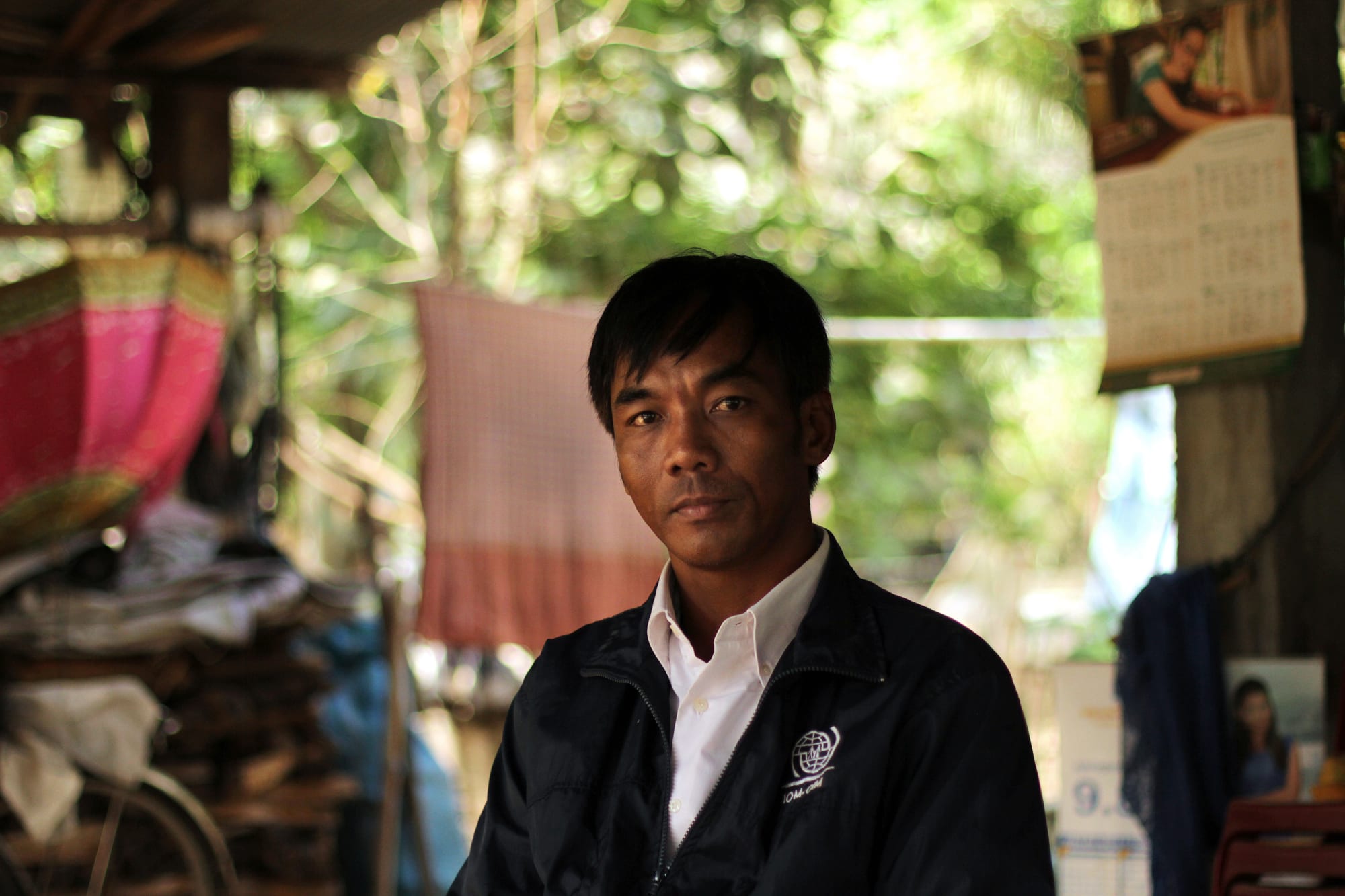
"Many who lost contact with their family and felt hopeless, died of drinking and violence": Eng Bun Lai spent almost five years trapped on a fishing boat. Photo: RNZ / Tess McClure
A few kilometres of road later, Sophal pulls over the truck at an open air cafe. Eng Bun Lai is waiting in the dust. He wears a navy parka, embroidered with the white IOM logo: a freebie some men are given when they are brought back into the country. He has a thin face, prominent cheekbones and a thick red scar crossing his forehead.
Eng Bun Lai spent four years and seven months on one boat, working 21 hour stretches at a time, and was paid around 1 million rupiah (NZ$204) every two months. If there was no catch, there would be no pay.
Most of all, he remembers the exhaustion. They worked non-stop, without eating or drinking. When one net was put out to catch fish, another would be drawn in and the men put to work sorting it.
At best, he would be given a break to catch three hours of sleep. If the nets were torn, the men would work through the night fixing them until day broke, drinking coffee to try and stay awake.
His voice slips when he remembers his time trapped on board.
“I thought about it a lot about it and didn’t know how I could leave the boat,” he says. “I was always thinking [about how] to return to Cambodia. I worked from day to day and didn’t have time to rest and I couldn’t come back to my hometown as I wished,” he says.
“Many who lost contact with their family and felt hopeless, died of drinking and causing violence, stabbed to death with a knife or fell into the sea when they got drunk. The men who died include Burmese, Thai, Laos and Cambodian.” Lai shakes his head.
“They drank wine so they could forget about their families. Such cases took place both in my boat and others.”
A 2015 study by the London School of Hygiene & Tropical Medicine interviewed 1102 trafficking survivors from Cambodia, Thailand and Vietnam, 27 percent of whom came from the fishing industry.
Eighty-eight percent of the men reported working seven days per week. Of all those surveyed, those working the longest hours were in the fishing industry, who worked an average of 18.8 hours a day.
Following their escape, many continued to suffer significant mental health issues. The study found 61 percent reported symptoms of depression, 42 percent anxiety, and 38 percent post-traumatic stress disorder. Five percent had attempted suicide in the past four weeks.
For those who manage to leave and make their way back to their villages, there is little waiting in the way of support. “Some of them are fine - they’ve dealt with the experience. they have mild depression, but over time they’ve got used to being reunited with their families,” Dickinson says.
“Others are just falling apart you know, usually because of what happened. Some guys have been locked up in cages, whipped with stingray tails for punishment because they tried to escape, some have been in that situation where they have to fight others.
“Some of them have been away for seven years, and it’s so disorientating for them to come back to Cambodia after all that time.”
***
Back in New Zealand, some are working to improve the trade.
Former police officer Tim McKinnel entered the public eye around a year ago, after his work as a private investigator on the wrongful murder conviction of Teina Pora led to Pora’s freedom – one of New Zealand’s highest-profile miscarriages of justice. After that, he came to the Greenpeace oceans campaign. He has worked undercover investigating fishing supply chains out of Taiwan and Thailand, and fronts the team tracing human rights abuse-tainted fish from Thai ships to New Zealand supermarkets.
Mckinnel says even after a career working in crime, he was shocked by what he encountered on the boats. Some of the men he interviewed were experiencing “terrible violence, bordering on torture”.
“Some were perfectly happy and comfortable with their conditions. others were being treated abysmally,” he says.
“It was disgusting. At every level. Here in New Zealand we wouldn’t have animals living in those conditions.”
The Thai fishing industry produces around 4.2 million tonnes of seafood a year, most of which is destined for export. McKinnel’s team has focused on supplies coming in from Thai Union, one of the world’s largest fishing companies.
Thai Union was implicated in a 2015 investigation by Associated Press which said its products were being produced by workers in slave-like conditions. In a June 2016 statement to its shareholders, Thai Union said it had begun assessment of its own supply chains and acknowledged a number of instances of forced labour, trafficking and human rights violations had been uncovered.
In a statement to RNZ, a Thai Union spokesperson said the company had taken a number of steps, including a new code of conduct and external auditing to try and eliminate forced labour in its supply chains.
“Thai Union is making significant efforts in traceability processes that enable us to prove that our seafood is legally and safely produced, and that safe labor conditions are met throughout the supply chain,” they said.
Documents released under the Official Information Act (OIA) show Thai Union and its subsidiary Songkla Canning have sold more than 5.7 million kilograms of product into New Zealand since 2008 - including 600,000kg last year.
Which companies are importing and on-selling that product under their own brands is still unknown. While Customs released the amounts and product types imported from Thai Union, it would not release the names of those importing it, stating it would “unreasonably prejudice the commercial position” of the companies.
While the connection of New Zealand’s imports to slave labour was made public in April, Customs has maintained their silence.
In documents released under the OIA, a retailer of Thai Union Products writes to Customs that “we believe the source of supply is highly commercially sensitive and the requested disclosure would cause unreasonable prejudice to our commercial position and is highly likely to cause brand damaging misinformation to released [sic] to the market”.
Internal correspondence shows one person from Customs writes “I can see we’re in a lose-lose situation here - if we release the names of importers, those importers will be annoyed, and if we don’t release their names then Greenpeace will announce that we’re protecting the companies.”
Ultimately, Customs declined requests for the names of companies importing Thai Union goods.
***
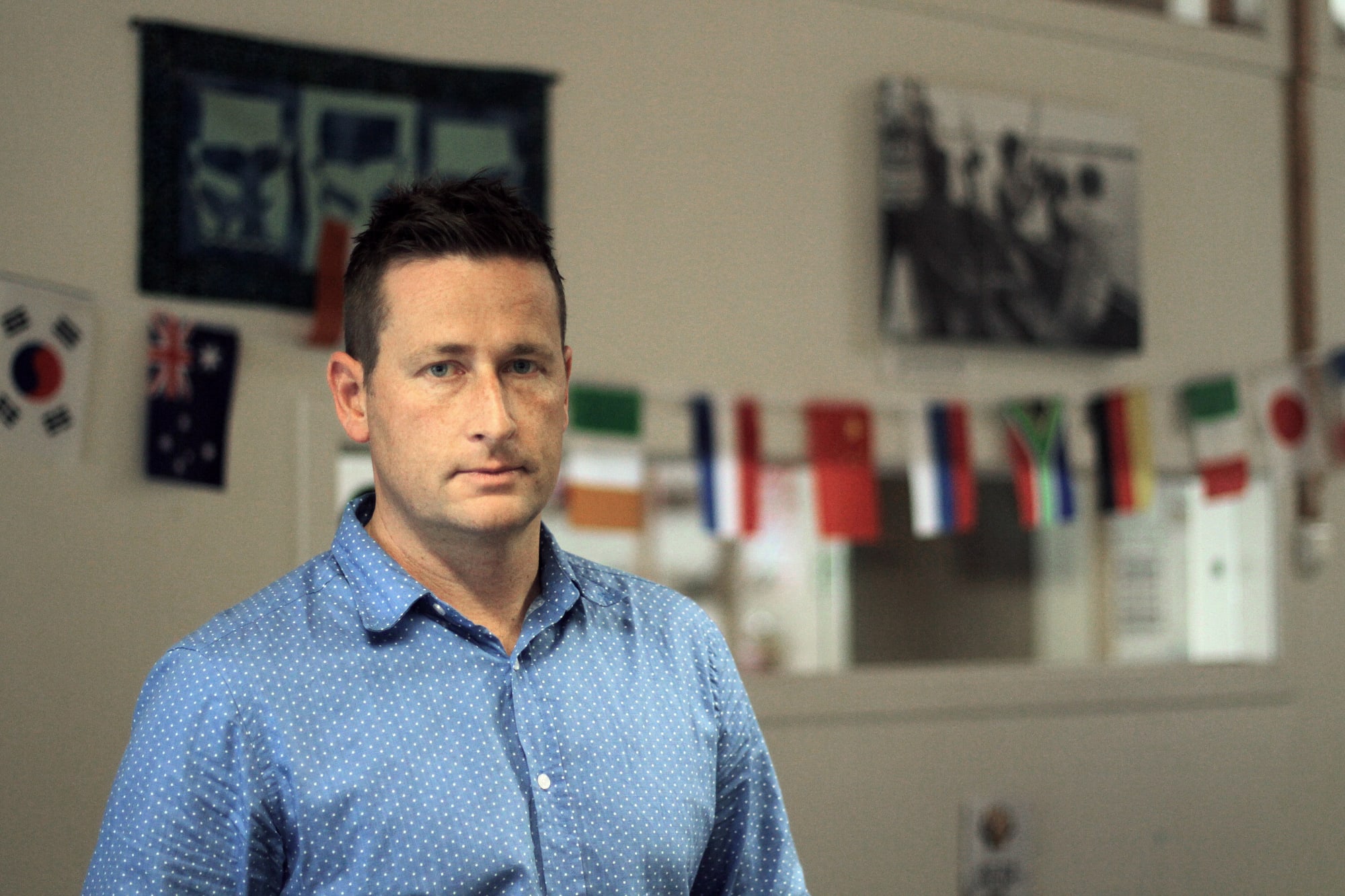
"Here in New Zealand we wouldn’t have animals living in those conditions.” Investigator Tim McKinnel works tracing supply chains from Thai ships to New Zealand. Photo: RNZ / Tess McClure
But while Thai Union has become the poster-boy for slave-like conditions in the fishing industry, McKinnel says the problem is endemic in the industry.
“It’s pretty clear that there are massive problems with the Thai fishing fleets. Whether they are Thai flagged, Thai owned, or just supplying the Thai industry,” McKinnel says.
Other major international food companies are beginning to acknowledge the problem. In 2015, facing a class action lawsuit, Nestlé commissioned its own investigation into labour conditions of workers catching and processing its Thai seafood products.
The resulting report “found indicators of forced labor, trafficking, and child labour” at all the sites it examined. It documented reports of withheld wages, forced labour, chronic sleep deprivation, routine violence, deaths at sea, and debt bondage on board the company’s supplying fishing boats.
The report concluded that forced labour and trafficking “are not unique or limited to the Nestlé supply chain. Virtually all companies sourcing seafood in the Thai seafood sector are exposed to the same risks.”
***
Both Ly and Lai’s boats eventually docked again in Thailand, and they finally left.
Ly had been unable to contact his family for six years. For Lai, it had been four years and seven months. On return to Thailand, they were recognised for what they were - undocumented immigrants - and sent back to their homes.
Eng Bun Lai received a grant from an NGO to help him get started: enough to buy a motor scooter.
“I hope that I can continue to make a living with my own strength because I didn’t have the capital to start up a business,” he says. “I would use my own strength to work for money to support my family.
“I want to tell to those who wish to leave for Thailand to look for a better job, please, do not wish to go. The employers won’t pay us enough. Avoid working on the boats.”
On the ships, Ly’s employer had promised his wage was being sent back home: $240 every month, a small fortune in a village like this. When he returned, he found not a single cent had ever arrived. After six years of labour, his family’s situation was the same. And the old debts were waiting.
“I have never received my pay since I went to work on the boat. I have never received the 6000 baht [NZ$240 he was promised] for my work and they never sent any money to my family.”
He shakes his head.
“We never received any at all.”

Thin Theng Ly and his wife outside the store where they sell snacks Photo: RNZ / Tess McClure
At the village, after Ly has finished talking, the women gather to squat in the dust outside his family’s shop. Sophal stops to regale them with dire warnings about what happens to the daughters sent as wives to China; the sons they send over the border to the fishing boats.
The oldest woman looks at him impassively.
“We are poor,” she says, spreading her hands. “That’s why we send our children.”
He fires back something in Khmer, and turns back to translate.
“I am telling them, ‘do you want the money so badly, you send them to die?’ I said to her: ‘Do you want to trade your life for the money or keep your life?’”
The woman frowns and raises one hand in a sweeping gesture that seems to encompass the small village, the dust, the single shop, the potholed roads. Then she shrugs.
It’s no choice really.
Travel for this story was made possible by a grant from the Asia New Zealand Foundation
